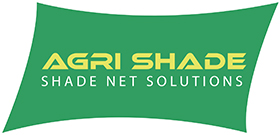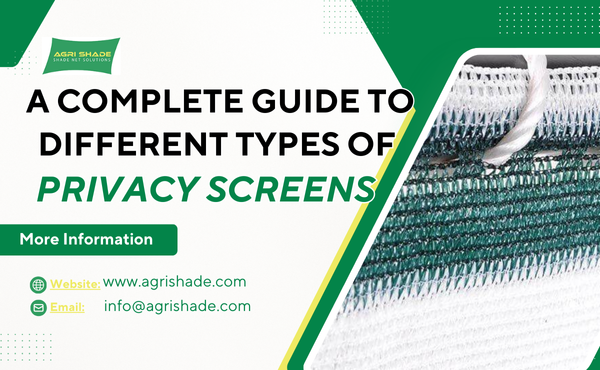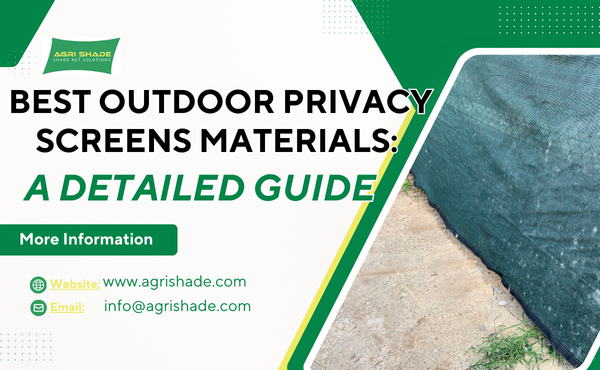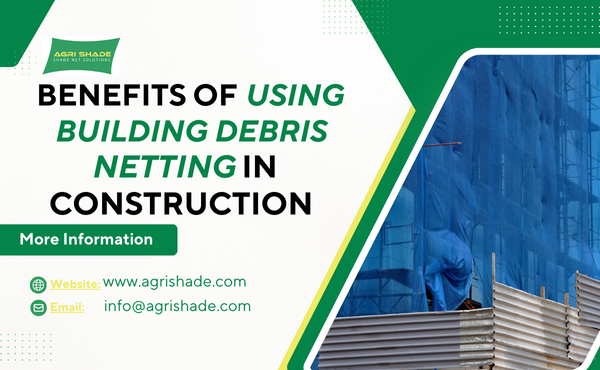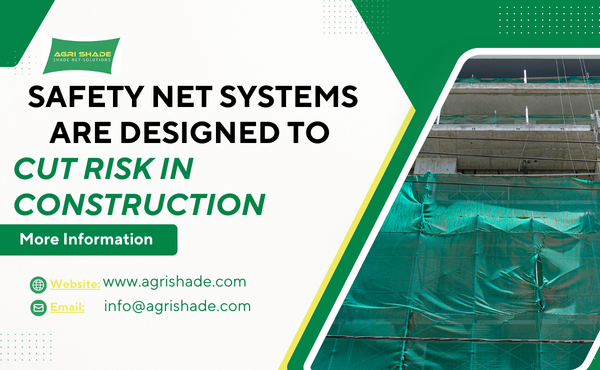Shade Net Benefits for Vegetables
What is a Shade Net?
A shade net is a special net that you use to cover your vegetables. You place the shade net above your plants to block some sunlight and give them the right amount of shade. Shade nets come in different materials and colors. You can choose a shade net that fits your garden and your vegetables.
Shade cloth is another name for this net. You use shade cloth to control how much light and heat reach your vegetables. Garden shade cloth helps you protect your plants from too much sun. Shade netting is easy to set up and move. You can use a shade net for many types of vegetables.
How Shade Nets Help Vegetable Growth
Shade nets help your vegetables grow strong and healthy. When you use a shade net, you lower the heat around your plants. Shade cloth keeps your vegetables cool and safe from harsh sunlight. Adding shade cloth can reduce sunburn and water loss in your garden. You use shade nets to keep the soil moist and protect your vegetables from drying out.
Shade nets also give your plants protection from wind and pests. With the right net and shade cloth setup, you help your vegetables get enough light without too much heat. Shade nets let you control the growing conditions for your vegetables.
You can use different shade percentages to match your vegetables’ needs. Shade nets make it easy to grow healthy vegetables in hot weather. You get better results when you use the right net and shade cloth for your crops.
Types of Shade Nets for Vegetable Farming
Monofilament vs Knitted Shade Nets
You can choose from different types of shade nets for your vegetables. Monofilament shade nets use strong, single threads. These nets last longer and give better UV protection. Knitted shade nets use many threads woven together. These nets stretch more and resist tearing.
Woven shade nets use flat strips and work well for short-term use. You should pick a net that matches your garden needs. Monofilament shade cloth gives you more strength and durability. Knitted shade cloth works best if you want easy handling and flexibility. Both types of shade nets help control heat and light for your vegetables.
Tip: Use monofilament shade cloth for long-lasting protection. Choose knitted shade cloth if you need to cover large areas quickly.
White, Black, and Colored Shade Cloth
You have many color choices for shade cloth. White shade cloth reflects heat and keeps your vegetables cool. Black shade cloth absorbs heat and works well in cooler places. Colored shade cloth, like red or pearl, can change how much light your vegetables get.
Aluminum shade cloth reflects the most heat and gives strong UV protection. You should match the color of your shade net to your climate. Use white or aluminum shade nets in hot areas. Try black or colored shade nets if you grow vegetables in cooler spots.
| Color | Heat Control | Light Effect | Best Use |
|---|---|---|---|
| White | Reflects | Soft, even light | Hot climates |
| Black | Absorbs | Less light | Cool climates |
| Aluminum | Reflects | High UV block | Very hot, sunny areas |
| Red/Pearl | Varies | Boosts growth | Special crops |
Shade Percentages for Vegetables
You need to pick the right percentage shade cloth for vegetables. Most vegetables grow best with 30-50% shade. Sensitive crops, like lettuce, need 40-60% shade. Sun-loving vegetables, like tomatoes, do well with 20-50% shade.
Always check the needs of your vegetables before you buy a net. The right shade net helps you control heat and protect your crops. You can use different types of shade nets to match each vegetable. Try to adjust the net and shade as your vegetables grow.
Note: The best shade net gives your vegetables the right balance of light and heat. Always match the net, shade, and color to your garden.
How to Choose the Best Shade Net
Match Shade Percentage to Crop
You need to match the shade percentage to your crop for the best results. Start by checking what your vegetables need. Leafy greens like lettuce need more shade, around 40-60%. Tomatoes and peppers grow well with 30-50% shade.
Use a lower percentage, like 20-30%, for sun-loving crops. If you want to know how to choose a shade net, always look at the crop’s light needs first. The right shade helps control heat and keeps your plants healthy.
Tip: Use a table to track which crops need more or less shade. This helps you plan your shade cloth setup.
| Vegetable Type | Recommended Shade (%) |
|---|---|
| Lettuce, Spinach | 40-60 |
| Tomatoes | 30-50 |
| Peppers | 30-50 |
| Cucumbers | 30-50 |
| Beans | 20-40 |
Select Material and Color
You must pick the right material and color for your shade cloth. Monofilament nets last longer and give strong protection. Knitted nets stretch and work well for large gardens. White or aluminum shade cloth reflects heat and keeps crops cool.
Black shade cloth absorbs heat and suits cooler places. Colored shade cloth can boost crop performance for some vegetables. When you ask how to choose a shade net, always think about what your crops need most.
Consider Climate and Location
Your local climate and garden location matter when you choose a shade net. Hot, sunny areas need more shade to protect crops from heat. Cooler places need less shade so crops get enough light. If you grow vegetables in a windy spot, use a strong net to stop damage.
Always check your garden’s sun and wind before you install shade cloth. If you want to know how to choose a shade net, look at your weather and garden layout.
Step-by-Step Guide: How to Choose a Shade Net
- List your vegetables and their light needs.
- Check your local climate for heat and sunlight levels.
- Pick the right shade percentage for each crop.
- Choose the best shade net material for your garden size.
- Select a color that matches your climate.
- Plan your shade cloth setup based on sun and wind.
- Install shade cloth before the hottest part of the season.
- Watch your crops and adjust the net if needed.
Remember: The best shade net balances light, heat, and moisture. Good planning helps you get healthy crops and strong yields.
Practical Tips for Balancing Light, Heat, and Protection
- Use more shade in summer to stop heat stress.
- Try less shade in spring and fall for better growth.
- Check your net often for damage or loose spots.
- Move or adjust your shade net as your crops grow.
- Keep soil moist under the shade cloth for best results.
If you follow these steps, you will know how to choose a shade net that fits your garden. The right shade cloth protects your vegetables and improves crop performance.
Conclusion
By selecting the right shade net based on material, color, and shade percentage, growers can effectively regulate light, temperature, and moisture levels for their vegetables. Different crops and climates require different setups, and understanding these needs is key to creating optimal growing conditions.
A well-matched shade net not only reduces heat stress and water loss but also provides protection from wind and pests. In the end, it’s this balance of light control and environmental protection that makes shade nets a valuable tool in successful vegetable farming.
AGRISHADE is a shade net manufacturer offering custom solutions for vegetable farming. Whether you grow in greenhouses or open-field production, we tailor each net to your specific requirements. Start your order with a free quote today!
